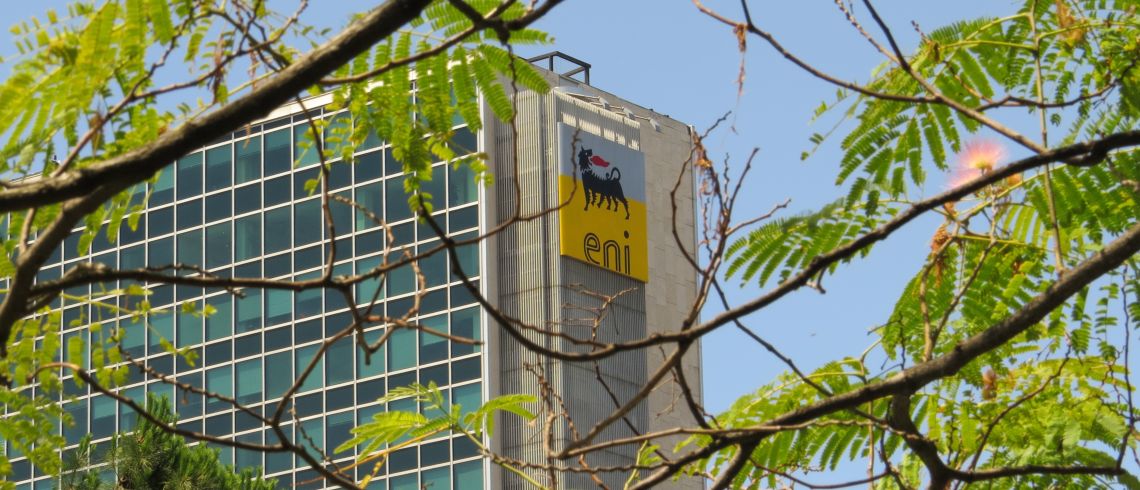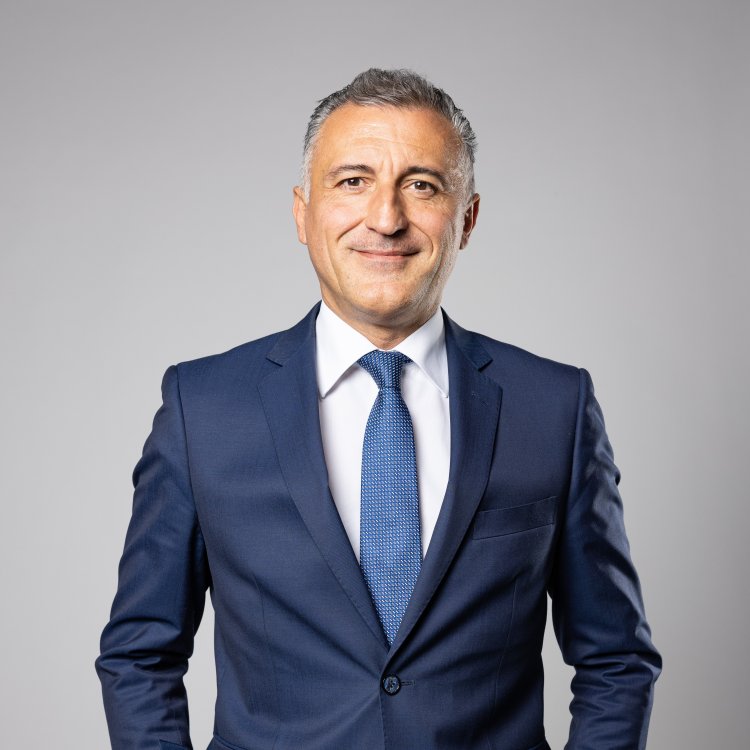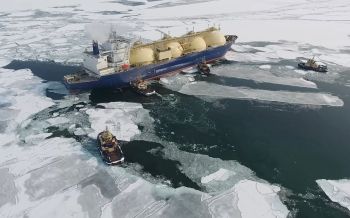Guido Brusco was appointed chief operating officer for natural resources at Italian supermajor Eni in February 2022. He began his career in the technical areas of the exploration and production business, holding positions of growing responsibility in Italy and abroad, up to the role of operations director in Egypt in 2005 and then in Kazakhstan in 2009. Brusco took up the role of managing director in Kazakhstan in 2013 and subsequently in Angola in 2015. In 2018 he was appointed executive vice president for the Sub-Saharan Africa region, and in 2020 he became Eni’s director of upstream.
In this exclusive interview, Brusco talks to LNG Business Review about Eni’s aspirations for expanding gas production in Indonesia, the company’s focus on offshore and LNG production in Africa, and how decarbonisation targets can be met against rising hydrocarbon production.
In October this year, Eni announced a significant natural gas discovery in the North Ganal area in Indonesia’s Kutei Basin, 85 km off the coast of East Kalimantan. With an estimated 5 Tcf of gas-in-place, the plan is that the field will supply the nearby Bontang LNG facility. Can you say a bit more about the characteristics of this discovery and when we can we expect first gas?
We estimate that each well will produce around 100 MMcf of natural gas and close to 7,000 barrels of condensate. So you may think of this as a gas discovery with a lot of liquids or a liquid discovery with a lot of gas. It has both.
This discovery comes after the acquisition of Indonesia Deepwater Development (IDD) – the Indonesian assets of Chevron – and after the acquisition of Neptune which gives us a stake between 80-90% in all the blocks of the Kutei Basin.
North Ganal’s proximity to the Bontang plant might help us to increase our LNG growth target over time.
The synergies are important to us. With the acquisition of IDD, we are taking ownership of another three major discoveries in the area which accounts for another 5 Tcf of natural gas and a few hundred millions barrels of liquids. Those resources could probably not be developed on a stand-alone basis, or at least that would be with a different cost profile. Now, having this significant new discovery in North Ganal, we can create a hub that will unlock the development of these additional resources. The other synergy is that this field is very close to the Bontang LNG plant which has spare capacity to accommodate this gas into a long-term premium market, which is that of the Far East. This might help us to increase our LNG growth target over time and it will further strengthen the integration between our upstream and midstream business.
Moreover, having the LNG plant available allows us to focus only on the upstream development which in this case will be a floating unit with some processing facilities as well as subsea wells with interconnections. From the day we take the final investment decision (FID), it will take between 2.5-3 years to develop the field. As for the timeline for FID, well let me say that usually we are very fast. We need a bit of time to do the paper work and go to the market to receive offers. But I would expect FID within a year.
Are there any major technical challenges linked to the discovery? And what about costs?
It is not a complex development. We already have a floating production unit in the Kutei Basin which is located in the south of the basin. It is currently producing 700 MMcf/d of gas.
The new discovery and the aforementioned three discoveries are in the north of the basin. What we are envisaging is to build a second floating production unit which should have a capacity of 800 MMcf/d to 1 Bcf/d of gas. It is very close to a carbon copy, so we don’t need to reinvent the wheel to design this new unit.
We are confident in our ability to bring forward projects in Indonesia – the government is keen to support the increase of gas production.
It is not a capital intensive development. Although it is deepwater, it ranks in a very low unit development cost per barrel. We are talking about a few billion dollars for the initial phase. Over time we will tie-back the other discoveries to maintain a long-term plateau.
There is a lot of talk about Indonesia’s gas production being in decline. There is also some resentment over the regulatory framework in the country and we have seen majors pull out recently. Why is Eni placing a big bet on Indonesia?
Our experience is very positive in Indonesia. To testify how much we believe in Indonesia: we have just purchased the assets of Chevron and IDD and we bought Neptune [which also has assets in Indonesia]. We wouldn’t have made those acquisitions without the confidence in our ability to bring forward projects in Indonesia. The government is very keen to support the increase of gas production and now – with the recent acquisitions and discoveries – we have the resources that can revamp the production, at least in the Kutei Basin. We are talking about a plateau in the south of the basin of 700 MMcf/day for the long term, and we are talking about a potential plateau of 800 MMcf/d to 1 Bcf/d in the north for a long term. So from Eni’s side, Indonesia is a key country and we are planning to achieve a stable and high production in the forthcoming years.
As for peers, some companies including Chevron have left the country but many others are interested to continue activities there. BP is one of them. Others, like Abu Dhabi-based Mubadala Energy, are planning exploration wells in the Andaman basin.
Eni has recently divested a number of oil and gas assets in Africa. What is behind this decision?
The broad strategy for us is decarbonisation, a just transition and focus on natural gas. We want to increase the share of gas in our production mix. And, of course, focus on the assets where we can extract the most value. We have been present in Congo since 1968 – we operated legacy assets there in the 1970s, ‘80s and ‘90s. Over time we have sold these assets to companies that can extract more value from those assets more efficiently than us. We are focusing on projects like Congo LNG where we can monetise the gas and focus on LNG.
Building on the positive experience with Coral South, we thought it was a good idea to have an exact carbon copy of the project.
The same goes for Nigeria. In Nigeria, we are not leaving the country but are focusing on what we do best, which is LNG and deepwater fields. We are selling the onshore concessions where other companies are more efficient than us and can extract more value. You can see it as an upgrade of the portfolio or a portfolio that is more aligned with our strategy to transition to a new energy mix.
The Eni-led Coral South floating liquefaction (FLNG) plant in Mozambique shipped its first cargo in late 2022. Eni now has plans for a second floating LNG facility in the country, Coral North FLNG. How is that project progressing?
Mozambique has vast resources. Building on the positive experience with Coral South, which we built on time and on budget despite the Covid-19 pandemic, we thought it was a good idea to have an exact carbon copy of the project. This of course brings a number of advantages. The second project will be built at an even lower cost than the first. We still have to complete the governance to come to FID, but we are very confident that by the first quarter of 2024 we will take FID also on Coral North. It will be an exact replica of Coral South, with 3.4 mtpa capacity.
Eni has set some ambitious targets for reducing CO2 emissions, more ambitious than many of its peers. But to what extent is producing more hydrocarbons compatible with those targets?
It is correct that we will be producing more hydrocarbons, which by definition will increase the carbon footprint. At the same time, we are working on a number of strategies. Today, our production mix is roughly 50-50 oil and gas, but by 2030 it will be 60% gas and 40% oil and by 2050 it will be 90% gas and 10% liquids. But we are also working on efficiency. We have an aggressive plan to reduce routing flaring to zero by 2026. We have a very aggressive plan to reduce methane emissions to near-zero by 2030 and we are also working on the efficiency of stationary combustion – the gas turbines for electricity generation to power upstream facilities. Combining all these elements, including carbon capture solutions, we are confident that we will deliver the path to net zero and the intermediate targets of 80% GHG emissions reduction by 2040 and 30% by 2030, having 2018 as the baseline. - AW
Subscription Benefits
Our three titles – LNG Business Review, Gas Matters and Gas Matters Today – tackle the biggest questions on global developments and major industry trends through a mixture of news, profiles and analysis.
LNG Business Review
LNG Business Review seeks to discover new truths about today’s LNG industry. It strives to widen market players’ scope of reference by actively engaging with events, offering new perspectives while challenging existing ones, and never shying away from being a platform for debate.
Gas Matters
Gas Matters digs deep into the stories of today, keeping the challenges of tomorrow in its sights. Weekly features and interviews, informed by unrivalled in-house expertise, offer a fresh perspective on events as well as thoughtful, intelligent analysis that dares to challenge the status quo.
Gas Matters Today
Gas Matters Today cuts through the bluster of online news and views to offer trustworthy, informed perspectives on major events shaping the gas and LNG industries. This daily news service provides unparalleled insight by drawing on the collective knowledge of in-house reporters, specialist contributors and extensive archive to go beyond the headlines, making it essential reading for gas industry professionals.






